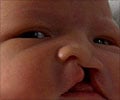Causes and Risk Factors
Any birth defect involving incomplete closure of the spine results in spina bifida. In normal cases the two sides of the backbone (spine) join together to cover the spinal cord, spinal nerves and meninges during the first month of pregnancy.
Myelomeningocele is the most severe and the most common form of spina bifida. The bones of the spine do not completely form, resulting in an incomplete spinal canal. Meninges are the tissues covering the spinal cord and the brain. The spinal cord and meninges push through the hole in the child’s back.
The exact cause of myelomeningocele is unknown. Low folate levels during pregnancy increase risk of spina bifida. The vitamin folic acid (folate) is vital for the development of the brain and the spinal cord.
There also seems to be a genetic component. However if a child is born with myelomeningocele, future children in that family have a higher risk than the general population. There are also cases in which there is no family connection.
Maternal use of certain drugs like valproate, maternal diabetes may also act as risk factors.
Other congenital anomalies seen in association with the condition include:
Hydrocephalus: Seen in as many as 90 % of children with myelomeningocele. Infants with hydrocephalus are characterized by abnormally rapid growth of the head and bulging fontanelles and a small face.






